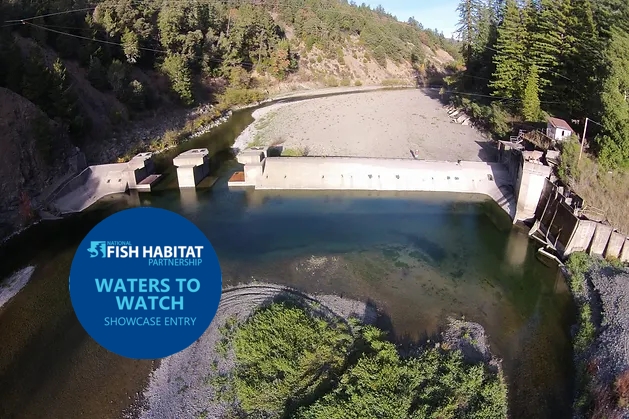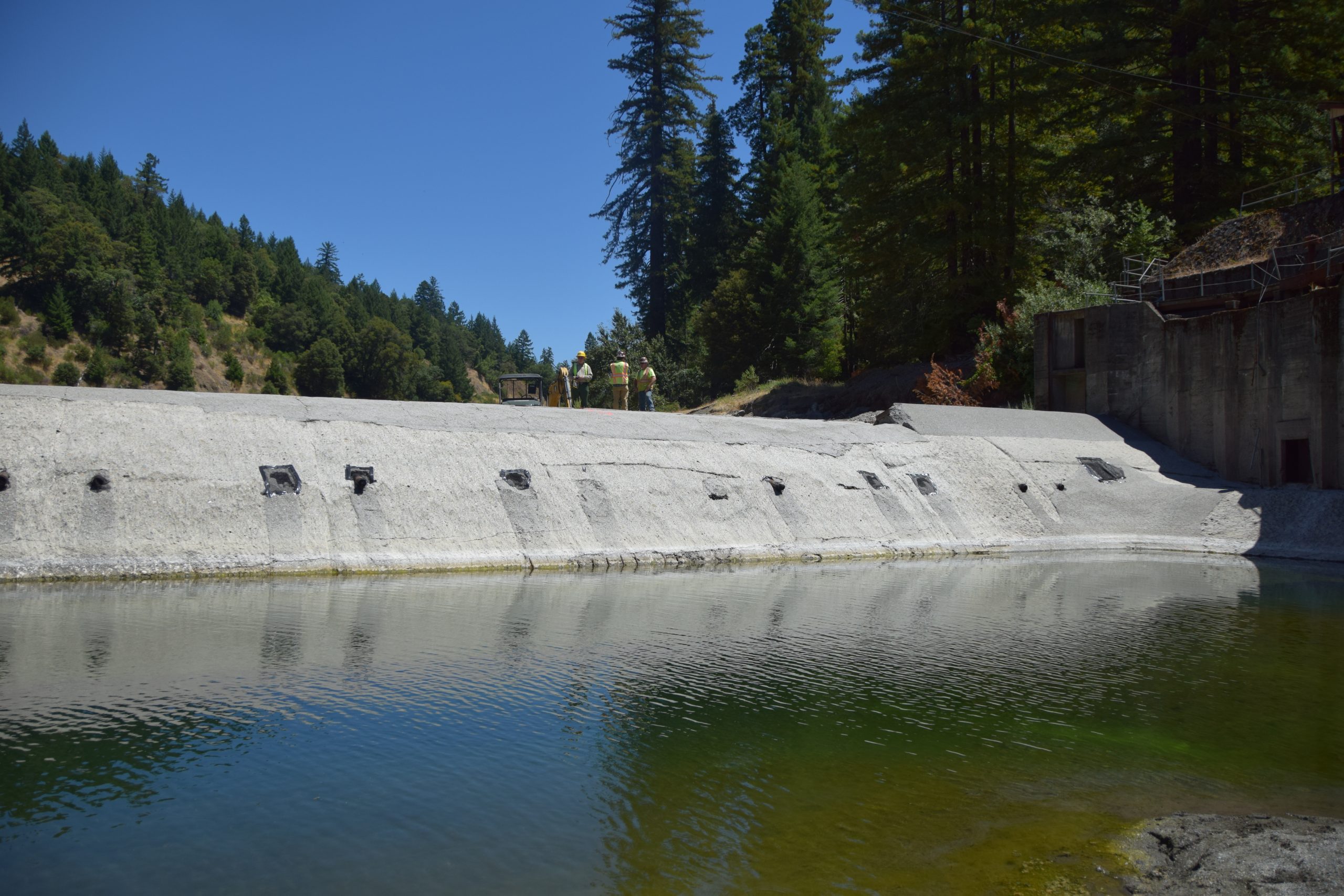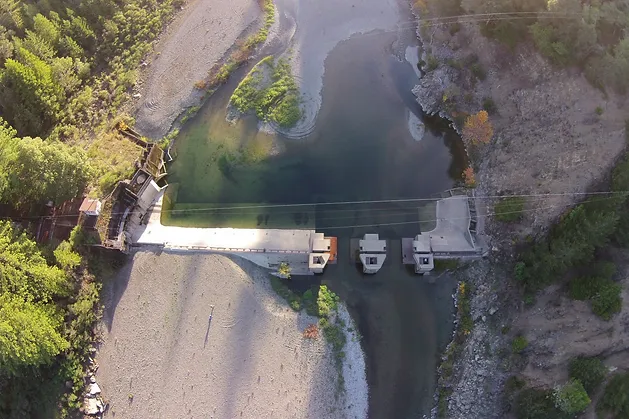Benbow Dam Removal
In 2017 this project was selected as one of NFHP’s annual list of 10 Waters to Watch. Learn more here
Project Lead: California State Parks
Location of Project: 40.06566100, -123.80127200
Description of Project: This project will remove Benbow Dam to facilitate fish passage and habitat improvement for Coho, Chinook, Steelhead and most other aquatic species (c.f. lamprey eel) in the South Fork of the Eel (SFE) River in southern Humboldt County, Northwestern California. The project area is located in the Benbow Lake State Recreation Area, about 70 road miles south from Eureka, California and about 2 miles south from Garberville, California. Removal of the dam was an explicitly specified activity identified in National Marine Fisheries Service, 2012 draft Recovery Plan for the Evolutionarily Significant Southern Unit of the Southern Oregon/Northern California Coast Coho Salmon, National Oceanic and Atmospheric Administration – National Marine Fisheries Service, Arcata, California. The project is also consistent with the 2004 Recovery Strategy for California Coho Salmon, California Department of Fish and Game, Sacramento, CA. This project completely removes the dam so that there is no obstruction to flow, sediment, wood, or fish migration. The long-term goals to be achieved through removal of the dam are to; permit increased and easier fish passage, eliminate wave driven bank erosion from the dam’s resulting lake, enable normal passage of wood and sediment and the development of riparian vegetation, restore natural flows and to eliminate heating/evaporation of lake waters, eliminate the dam’s seasonal installation disturbances and costs of about $30,000 per year, remove a potential safety and navigation hazard, and enable future planning for riverine recreational opportunities.
Description of why this barrier is a high priority project: Fish counts at the Benbow dam between 1938 and 1973 reveal a declining trend for all salmonids. Although this trend is not unique to Benbow dam, the site has been a long-term monitoring point to help assess recovery in the SFE. In the 1930’s salmonid populations passing the dam were estimated at about 20,000 Chinook and 15-17,000 Coho. The Eel River Coho adult population is currently thought to number about 500, Chinook about 1000, and Steelhead about 2,000 (Yoshiyama and Moyle, 2010). A recent dive study in the lower Eel indicated that Chinook in the fall of 2012 could number about 10,000 (Higgins, 2013). Examining current trends, only winter run Steelhead are currently projected to survive extinction over the next 50 years. Removing the dam is a keystone activity in helping to increase access for salmonids to and from the upper basin and to improving flow, temperature and sediment conditions in the immediate reach as well as farther downstream.
The name(s) of the recovery plans and the specific task that name this barrier as a high priority:
- National Marine Fisheries Service. 2014. Final Recovery Plan for Southern Oregon/Northern California Coast Evolutionarily Significant Unit of Coho Salmon (Oncorhynchus kisutch).
- National Marine Fisheries Service. Arcata, CA – Task SONCC-SFER. 5.1.25.2 remove barriers based on evaluation – Removal of Benbow dam was explicitly called out in the 2012 draft plan but was funded by the time the final draft was completed.
The California Fish Passage Forum has nine overall objectives. This project will help to address:
- Remediate barriers to effective fish migration.
- Implement education and outreach activities, targeting both the general public and fish passage practitioners.
Anadromous fish species that benefit from this project: Coho salmon, Chinook salmon, Steelhead/rainbow trout, and Pacific lamprey.
Miles of stream opened as a result of project implementation: 100 miles.
Location and distance in stream miles to downstream river structures, and whether each structure represents an insignificant, partial, or total barrier to fish passage: There are no known downstream barriers.
Location and distance in stream miles to upstream river structures, and whether each structure represents an insignificant, partial or total barrier to fish passage: No structures downstream present a barrier to fish, and no structures upstream present a barrier to fish to the headwaters of the basin.
How will the project be evaluated and measured for success: This project has a monitoring plan to assess success in achieving deliverables






